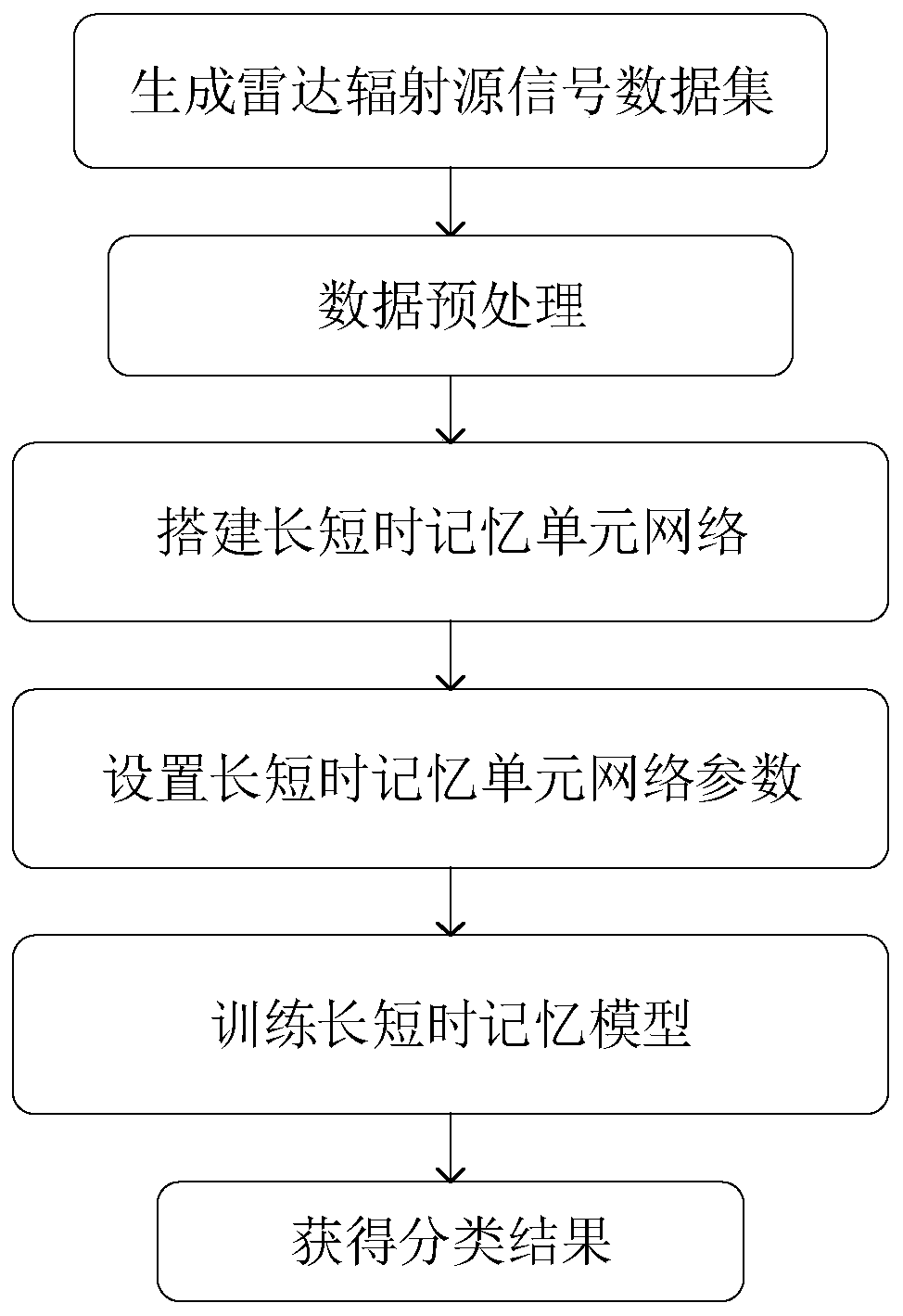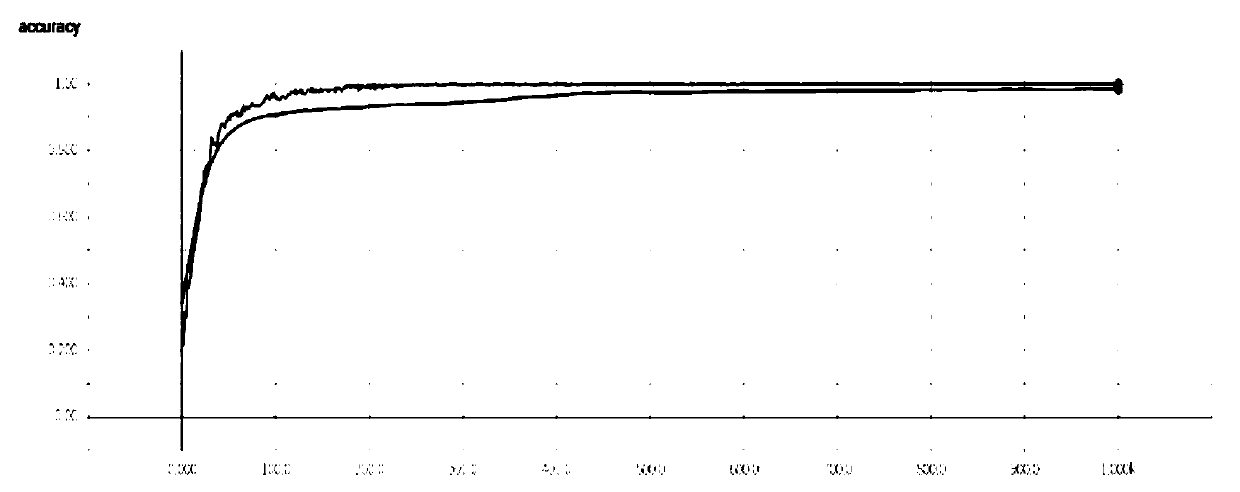Intelligent radar radiation source signal classification method based on long-short time memory model
A long-short-term memory, radar signal technology, applied in the field of signal processing, can solve the problems of long algorithm recognition time, high time complexity, and inability to apply real-time systems, to reduce the amount of calculation and improve efficiency.
- Summary
- Abstract
- Description
- Claims
- Application Information
AI Technical Summary
Problems solved by technology
Method used
Image
Examples
Embodiment Construction
[0027] Embodiments and effects of the invention will be further described below in conjunction with the accompanying drawings.
[0028] Refer to attached figure 1 , the implementation steps of this embodiment are as follows.
[0029] Step 1: Generate a radar emitter signal dataset.
[0030] The radar signal data set is generated by MATLAB simulation. The radar radiation source signal data set includes seven different modulation methods, namely conventional pulse signal, linear frequency modulation signal, nonlinear frequency modulation signal, two-phase encoded signal, four-phase encoded signal, and two-frequency encoded signal. signal, four-frequency coded signal, where:
[0031] The radiation source signal parameters are set as follows:
[0032] The sampling frequency is 2GHz, and the number of sampling points is 1024;
[0033] The carrier frequency of the five modulation methods of conventional pulse signal, linear frequency modulation signal, nonlinear frequency modula...
PUM
 Login to View More
Login to View More Abstract
Description
Claims
Application Information
 Login to View More
Login to View More - Generate Ideas
- Intellectual Property
- Life Sciences
- Materials
- Tech Scout
- Unparalleled Data Quality
- Higher Quality Content
- 60% Fewer Hallucinations
Browse by: Latest US Patents, China's latest patents, Technical Efficacy Thesaurus, Application Domain, Technology Topic, Popular Technical Reports.
© 2025 PatSnap. All rights reserved.Legal|Privacy policy|Modern Slavery Act Transparency Statement|Sitemap|About US| Contact US: help@patsnap.com



